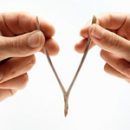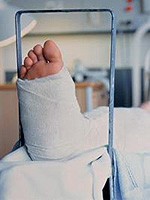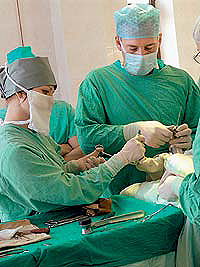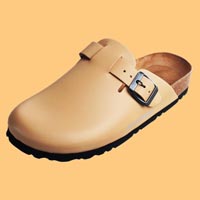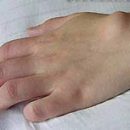Slender legs, and fragile bones: women many times more often than men suffer from reducing bone mass, which causes osteoporosis with age.
Content
What is osteoporosis?
Epidemiological studies have shown that there is not a single race, not a single nationality and a country free of osteoporosis. According to the latest data, osteoporosis is registered with 75 million people in the United States, Europe and Japan, combined, – This is every third woman in postmenopausal period and almost half of all men and women aged 70 years.
Over the past 20 years, significant progress has been made in the submission of pathophysiology and treatment of osteoporosis, and this has led to an understanding that the prevention and therapy of osteoporosis are a real task.
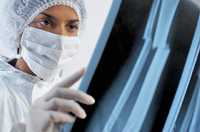
The effects of osteoporosis in the form of fractures of bodies of vertebrals and tubular bones cause a significant increase in the incidence and mortality among elderly. According to the World Health Organization, osteoporosis as the cause of disability and mortality of patients ranked fourth after diseases such as cardiovascular, oncological pathology and diabetes.
According to the classification, the primary and secondary osteoporosis distinguish. The primary includes the shadowless and sedenie, which make up 85% of all cases, as well as juvenile and idiopathic *.
Secondary forms include osteopathy associated with other diseases (Cushing syndrome, thyrotoxicosis, hypogonadism, rheumatoid arthritis and others), with drug intake (glucocorticoids, thyroid hormones and others). At the heart, in any case, there is an imbalance of bone change processes.
In 50% of cases, the disease proceeds asymptomatic, and the first clinical manifestations are bone fractures without preceding injury or with inadequate injury. In other cases, the most frequent symptoms are characteristic pain in the chest and lumbar spine, amplifying after a small exercise and long stay in one position.
Growth gradually decreases, kyphosis and kifoscolyosis appear, due to the shortening of the spinal column, the distance between the ribs and the pelvic bones is reduced, as a result, the abdomen appears forward, increases intraperitoneal pressure. Reduced growth and protruding stomach are not related to direct symptoms, but lead to the patient's emotional discomfort.
Most patients with osteoporosis complains of a significant reduction in working capacity, increased fatigue. Prolonged back pain contributes to increased irritability, excitability and even development of depression.
In the emergence of osteoporosis, risk factors and their combination of each particular person play a major role.
Osteoporosis development risk factors
Genetic
-
Ethnicity (White and Asian races);
-
family predisposition;
-
elderly age;
-
female;
-
Low body weight;
-
Low bone peak;
-
Lack of generalized osteoarthrosis.
Hormonal
-
Early menopause;
-
Later the beginning of menstruation;
-
long periods of amenorrhea ** before the onset of menopause;
-
infertility;
-
Diseases of the endocrine system.
Life style
-
smoking;
-
alcohol abuse;
-
caffeine abuse;
-
passive lifestyle;
-
excess physical exertion;
-
intolerance to dairy products;
-
low calcium consumption;
-
excessive meat consumption;
-
deficiency of vitamin D.
Currently, there are opportunities for early diagnosis of osteoporosis, even at the preclinical stage. If 15 years ago, the only method was a radiography of bones, detecting a disease, when more than 20% of the bone mass was lost, or there were bone fractures, now, thanks to the development of various diagnostic methods, it was possible to identify loss at 2%, to control the mineral density of bone tissue in the process treatment, prevention or observation of the dynamics of the natural flow of the disease.
Prevention of osteoporosis
Osteoporosis prophylaxis is a key task in the problem of osteoporosis. Prevention can be divided into primary and secondary.
The primary measures include:
-
control over the adequate consumption of calcium and vitamin D, starting in childhood;
-
providing the body by calcium during pregnancy and breastfeeding;
-
active lifestyle;
-
Regular exercise with moderate load, maximum reducing risk factors.
Indications for secondary prophylaxis is the presence of reliable risk factors:
-
Early or artificial menopause;
-
hypogonadism;
-
Corticosteroid therapy;
-
Sugar diabetes and many others.
In this case, the universal means is the purpose of calcium and vitamin D drugs.
Calcium must be combined with vitamin D for better calcium suction. Good sources of calcium are milk, yogurt, cheese, spinach, broccoli, nuts, beans, cabbage, parsley, soybean, oranges, tomato and orange juice. A glass of milk or kefira contains up to 200 mg calcium.
Unfortunately, the youth often neglects scientifically substantiated recommendations on the need for daily sufficient consumption of calcium products, and primarily dairy products. Yes, and many adult women ignore these useful tips. Meanwhile, it is convincing that in women who consume 1000 mg calcium daily, hip fractures occur by 75% less often than women who have twisted less calcium.
* Senile - senile, Juvenile - youthful, idiopathic - with an unidentified etiology (cause).
** Amenorrhea - No menstruation.

